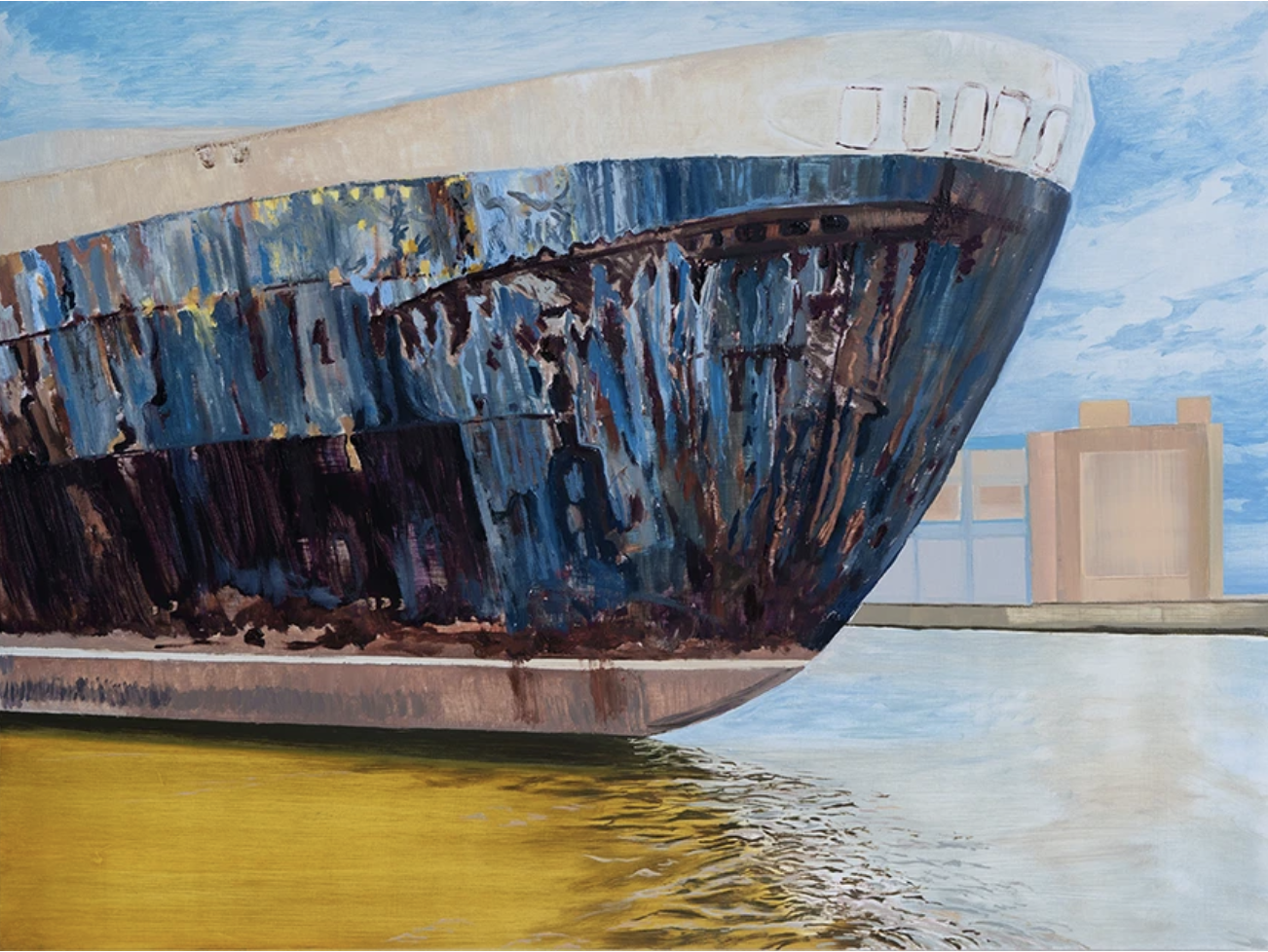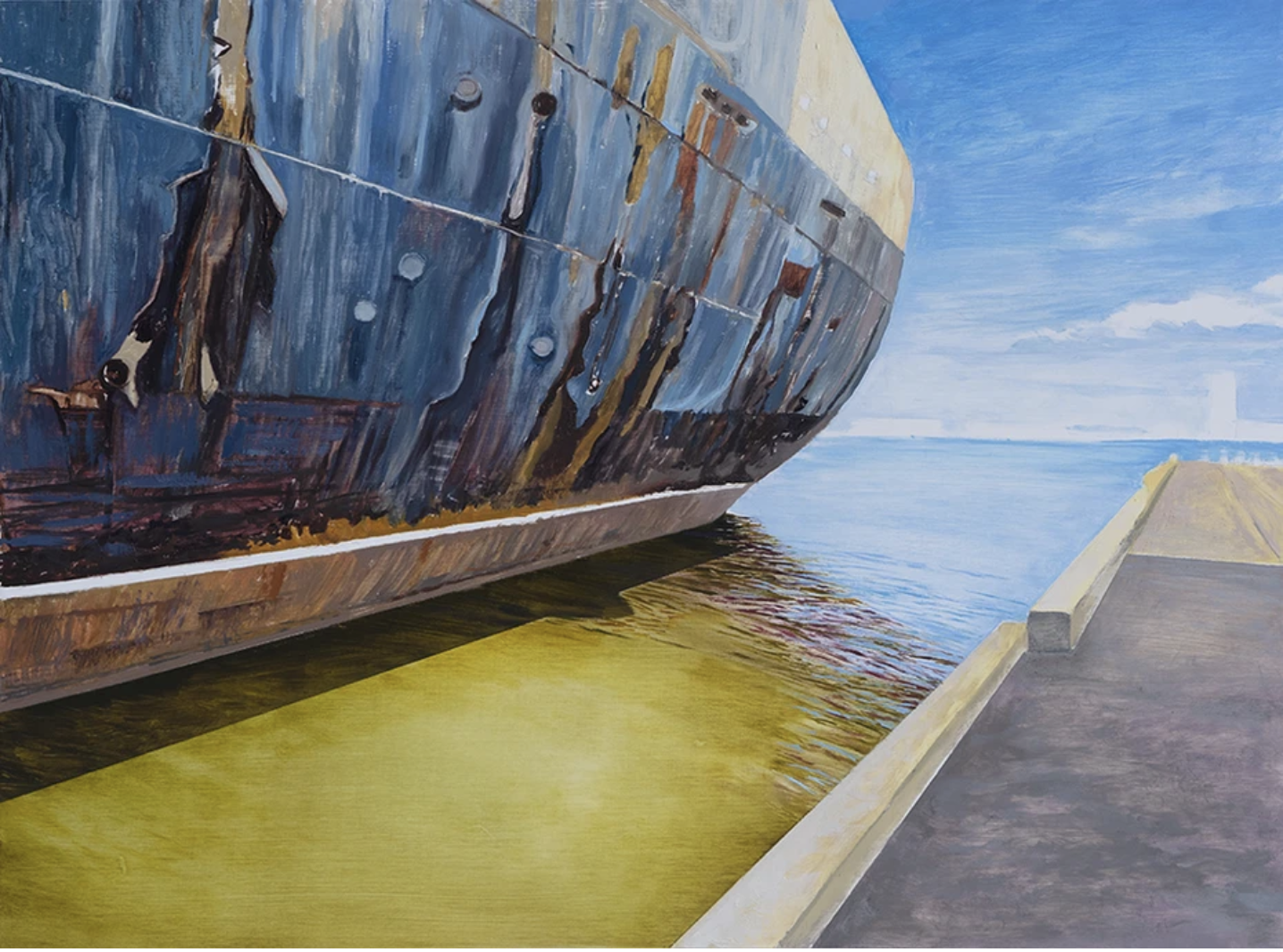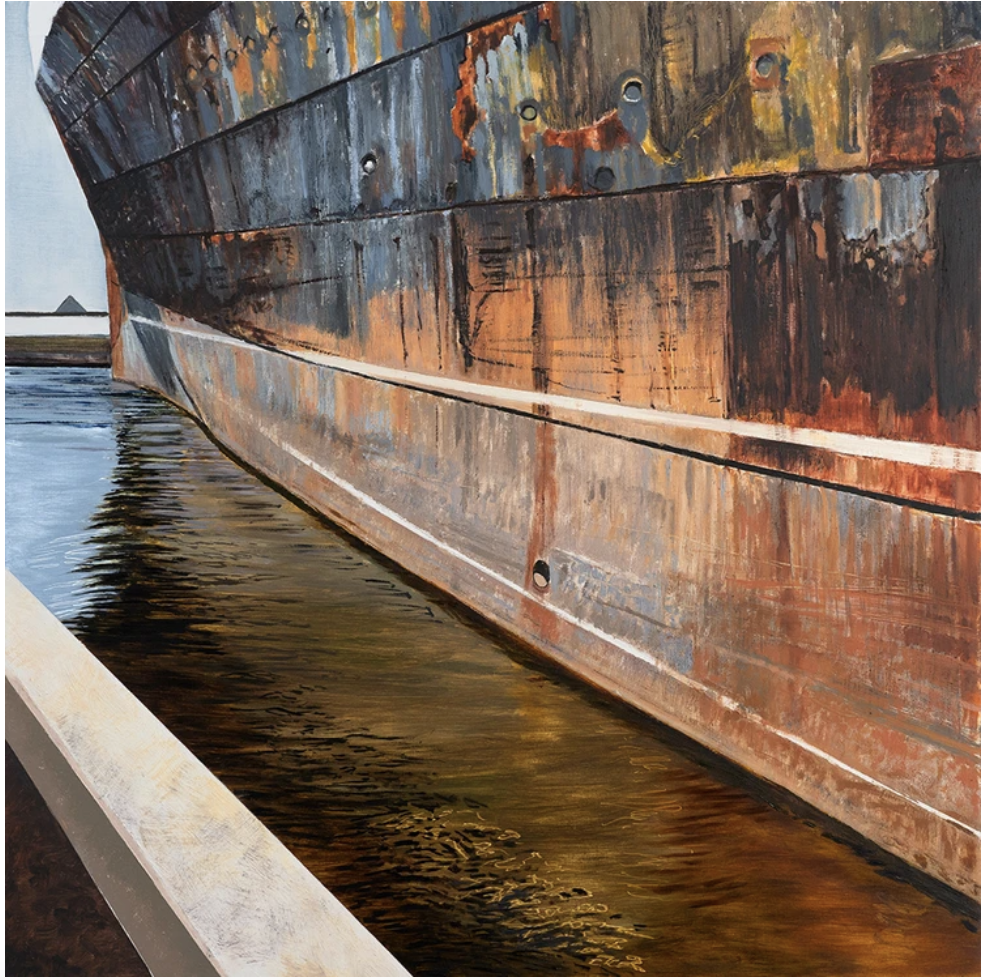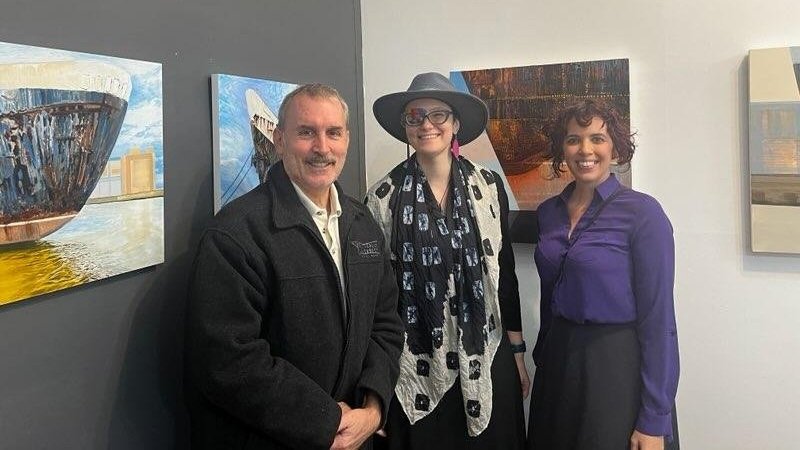Artist Brooke Lanier (center) is pictured with Curatorial Associate Alaina Noland (right) and Conservancy Advisory Council member Steve Perry at Lanier’s Philadelphia studio during a special SS United States-themed exhibition.
America’s Flagship has long been a source for artistic inspiration. Beyond the iconic examples of mid-century art and design that graced her public spaces and private quarters, she continues to inspire artists and designers..
Earlier this year, a series by Philadelphia-based artist Brooke Lanier focusing on the SS United States was featured in the “Berths and Ghosts” exhibit at the Novado Gallery in Jersey City, New Jersey. Earlier this month, as part of the Philadelphia Open Studio Tours (POST), Brooke opened her studio on South 4th Street in Philadelphia to Conservancy supporters and SS United States enthusiasts for a special exhibition and discussion. The full collection of Brooke Lanier’s Big U-inspired works can be viewed at http://brookelanier.com/ssus.
The following narrative was provided to the Conservancy by Brooke Lanier.
I’ve been painting the historic ships in Philadelphia for a few years and recently had a solo show of the work, which caught the eye of the Conservancy. Susan Gibbs reached out and generously invited me to tour the ship, which I’d attempted to visit by walking from every possible approach, as well as sailing past to get a better look. My dad had built a model of the ship as a child and was very excited to hear I was going to visit it in person. My first impression was that the ship is so immense that it is impossible to have a true understanding of its scale, nor the uniqueness of its design, without encountering it up close. It was an incredible once-in-a-lifetime experience, and I was enthralled by the richness of the textures and colors of her hull in particular.
I know that people lament the SS United States’ current state of disrepair, but to me it is a thing of great beauty to see the physical evidence of her history. Scratches and discolored paint, chafing and stains left by chains, scuffs from berths, and differing waterline marks evincing changes in buoyancy are intriguing. I could happily examine them for years and continue to find new things to appreciate. Then, I got to actually go aboard the ship and I discovered a new world of grand interiors and gracefully curved structures.
The SS United States in historically important for its innovation in ship design and its unusual combination of military utility and civilian luxury. I believe the combined purposes of the design and speed of the ship are unique and not found in contemporary ships or aircraft. The fact it was partially funded by the United States Navy fascinates me.
William Francis Gibbs took the lessons of the RMS Titanic to heart in developing a compartmentalized, fireproof, double-hulled vessel with two engine rooms. The knife-like bow and improbably narrow width of the ship are so extreme when viewed from the front that it seems the ship should tip over. This streamlined shape and lightweight aluminum hull made the SS United States the fastest ship of her time. Features that made the ship a safer luxury liner also reduced its vulnerability to attack during wartime if she needed to be used for rapid troop transport.
In addition to its speed, scale, and utility, the thoughtful details of the ship must be seen to be appreciated. Windows on hallways have subtle differences in height that complement the curvature of the ship and create an elongated view of the passage. The narrowness of the ship allows all above-water-level rooms to receive wonderful sunlight. Bolts are screwed in so that their lines ran parallel to the curvature of the porthole windows they secure. The bar is curved and has a little lip on the edge so that if there were heavy waves, it would not allow all the drinks to slide to one end or end up in peoples’ laps. There are a thousand little decisions like this, and the interior’s architecture remains majestic despite being stripped of decorations.
It is important to preserve this ship because it is a gorgeous testament to an era of transition and innovation. It is a monument to the transition from ships to airplanes as the dominant form of traveling overseas. It is evidence of functional elegance uncommon in the air travel that made ships of her kind obsolete.
People should support the work of the SS United States Conservancy to facilitate the conversion of this monumental vessel into a space that can be enjoyed by the public once more. With sufficient funding, the ship could have a permanent berth in a publicly accessible location as opposed to its current location in an active port, which necessitates homeland security clearance to access.
With proper funding and a publicly accessible berth, the ship could be converted to a combination of museum, event space, and hotel. She could have a new life as an educational resource while returning to her former use as a gathering place and temporary lodgings. This would have the added benefit of providing employment opportunities and boosting the local economy…
I appreciate how the curved forms inside of the ship combine a Mid-Century Modern aesthetic with maritime practicalities. The curving vaulted archways would feel at home on land, but the rounded windows and egresses reduce opportunities for water to enter at mitered corners. Plus, no one wants to bump into a sharp stairwell railing in rough seas, so rounded bannisters are a sound practical and aesthetic choice.
I hope that my artwork will introduce more people to the SS United States and be a gateway for them to seek more information. People are more likely to invest money in things with which they’ve formed a personal relationship. It is difficult for the general public to engage directly with the ship due to her current location, so it is my hope that my paintings will serve as ambassadors for introducing a wider audience to an important and beautiful part of American history.






